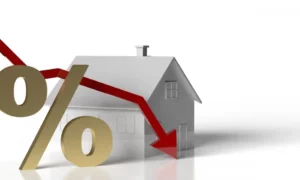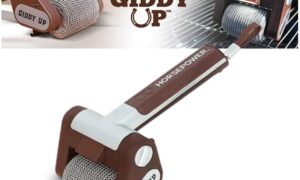The Mortgage Insurance Fund, which affects all borrowers who rely on federally insured reverse mortgage loans, has been at risk. HUD responded with a series of changes that limit exposure to future losses.
One of the silver linings of HUD’s changes is the re-emergence of Jumbo Reverse Mortgages.
For most borrowers, in the past, jumbo programs simply did not make sense.
Most often, borrowers with homes worth less than $1,089,300 would typically receive as much or more money on HUD programs with much lower rates.
The recent changes made by HUD have made it easier for Jumbo reverse mortgages to enter the market again, offering a product that makes sense for borrowers with home values over the HUD HECM national lending limit of $1,089,300.
Jumbo rates have dropped, and many borrowers are finding that the range of jumbo products offered is starting to appeal to homeowners with higher-valued homes.
JUMBO REVERSE MORTGAGES OFFER RATES & COSTS
The higher jumbo rates have increased from a previous 4.95% (5.95% APR) to as high as 7.5% and require no additional monthly insurance charges as required on all government-insured HECM plans.
Monthly mortgage insurance is not interest but accrues similarly, so you save by not having to pay for it on the jumbo loan.
When you remove the monthly mortgage insurance, which HUD charges at .50%, and consider the new, lower rates, the jumbo reverse mortgage options have become incredibly attractive.
Upfront and ongoing monthly mortgage insurance are not required with the Jumbo program, increasing the program’s appeal.
The upfront mortgage insurance premium charged on a HECM loan is formulated at 2% of your home value or lending limit, whichever is less.
That can equate to an immediate closing cost savings of $16,447.50 when directly comparing the financed closing costs of a HECM to a jumbo program.
JUMBO REVERSE MORTGAGES HAVE HIGHER LOAN-TO-VALUES
The jumbo reverse mortgage provides better loan-to-value ratios, which means borrowers receive more money as a percentage of their home value.
In most cases, it no longer takes a home value over $1,000,000 for the loan to make sense.
The jumbo programs make a lot more sense for many when you consider all the improvements: lower rates and fees, higher loan amounts, and underwriting enhancements, all of which benefit seniors with property values at or above $1,089,300.
It is safe to say the new jumbo products will not be the solution for all borrowers, but it most definitely gives seniors more options with the ability to choose whether they wish to capitalize on a program that looks at the full value of their home (up to $4 million).
ELIGIBLE PROPERTY TYPES & OTHER CONSIDERATIONS
Jumbo programs are eligible on single-family residences, *condominium properties, or two-unit properties, as long a borrower occupies one unit.
Properties that were listed for sale within the last six months of application are subject to evidence, such as a Multiple Listing Service (MLS) cancellation, indicating that the subject property is no longer listed for sale.
Non-borrowing spouses are eligible but are not subject to the same protections offered with a HECM.
Therefore, if there is a NBS, they should strongly consider a HECM loan.
The jumbo allows an NBS with additional requirements, such as a videotaped interview session with the borrower’s attorney and a court reporter, to ensure all parties understand the transaction.
JUMBO FAQS
What is a jumbo reverse mortgage?
The jumbo reverse mortgage is a special type of loan that offers larger loan amounts than the federally insured HECM. Where federally insured HECM loans stop considering home values over the HUD lending limit of $1,089,300, a jumbo reverse mortgage will consider home values up to $10 million.
What lenders offer jumbo reverse mortgages?
Many lenders and brokers throughout the US offer jumbo loan options.
How much can you get from a jumbo reverse mortgage?
The percentage of your home’s value is available based on the youngest borrowers age and current interest rate environment. Generally, the older you are the more you will receive, as these loans are based on actuarial tables.
Can you get a jumbo reverse mortgage line of credit?
Yes. There are two exciting expansions on jumbo products in 2021, including larger loan limits and the ability to utilize available proceeds as an open line of credit option. (Previously, only a single lump sum disbursement was permitted on jumbo loans).
What is the difference between jumbo and proprietary loans?
Where jumbo reverse mortgages are proprietary by nature, proprietary reverse mortgages are not necessarily jumbo. “Jumbo” is a reference to a “large loan amount.” Some proprietary reverse mortgages are offered to home values as low as $400,000, whereas Jumbo programs usually benefit those high-valued homes that are more than the HUD lending limit $1,089,300.



































